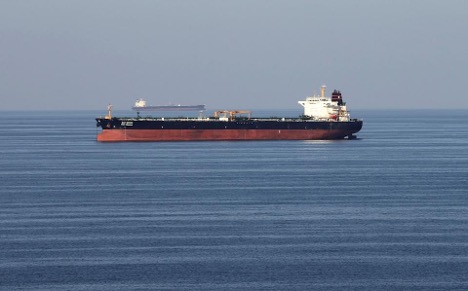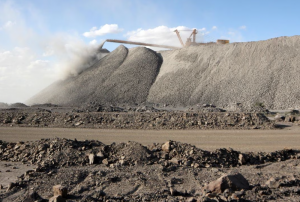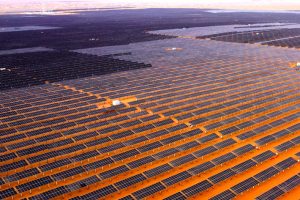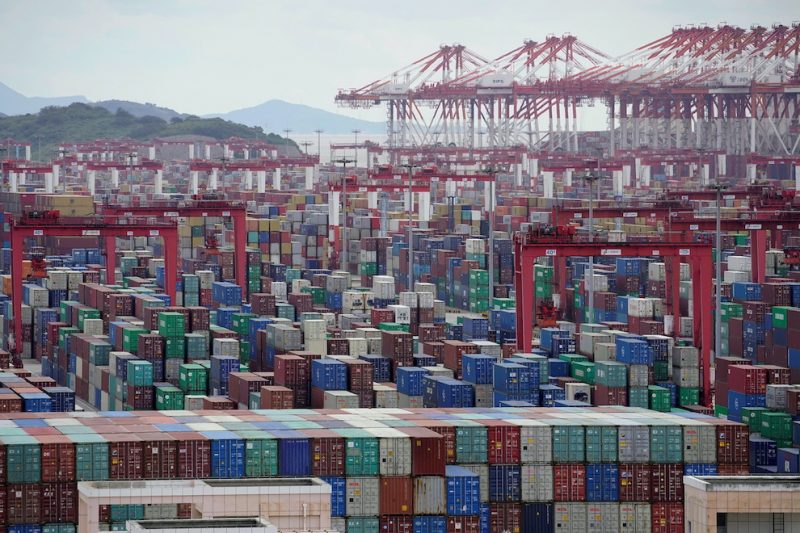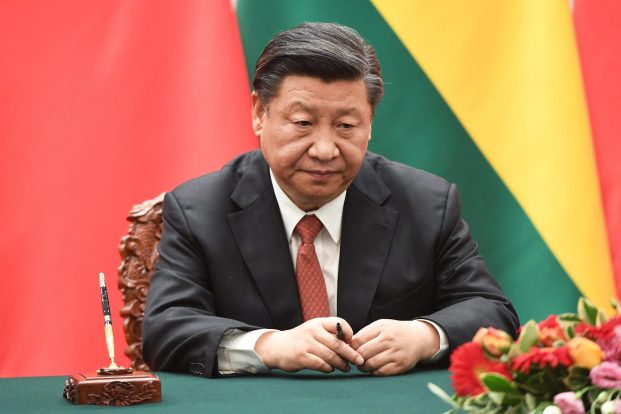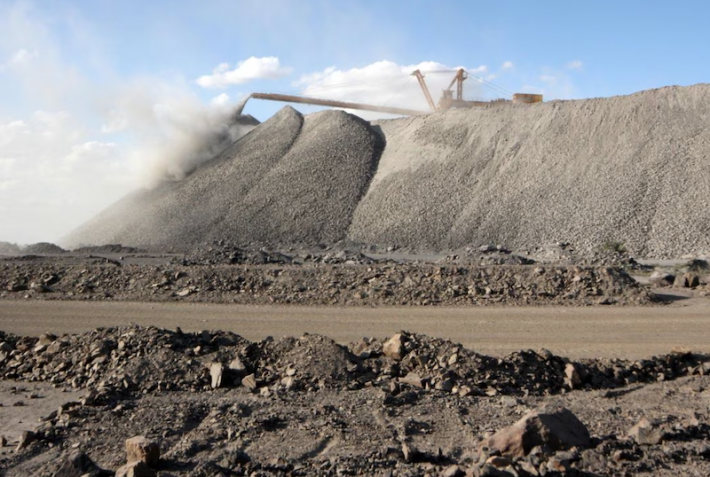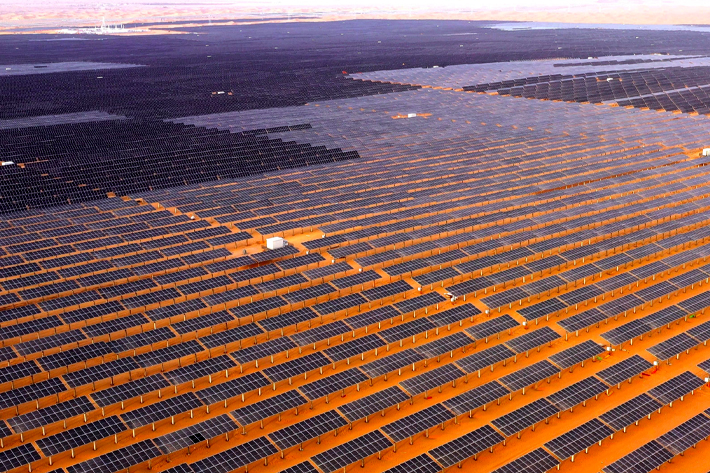Ship owners and global business leaders are watching the delicate situation in the Middle East amid concerns that global energy supplies would be badly impacted if Iran closes the Strait of Hormuz.
Iran’s parliament is reported to have backed a move to close the critical waterway, but any decision on that will be made by the country’s National Security Council.
Goldman Sachs warned in a note on Sunday that closing the Strait would lead to significant spikes in oil and natural gas prices because about 20% of global oil flows through there.
ALSO SEE: S Korea to Discuss Concern Over Curbs on Chipmakers in China
The bank estimated that Brent crude could briefly peak at $110 per barrel if oil flows through the critical waterway were halved for a month and remained down by 10% for the following 11 months.
Prices would then moderate, with Brent averaging around $95 per barrel in the fourth quarter of 2025, it said in a note.
Oil prices jumped on Monday to their highest since January after Washington joined Israel over the weekend in attacking Iran’s nuclear facilities.
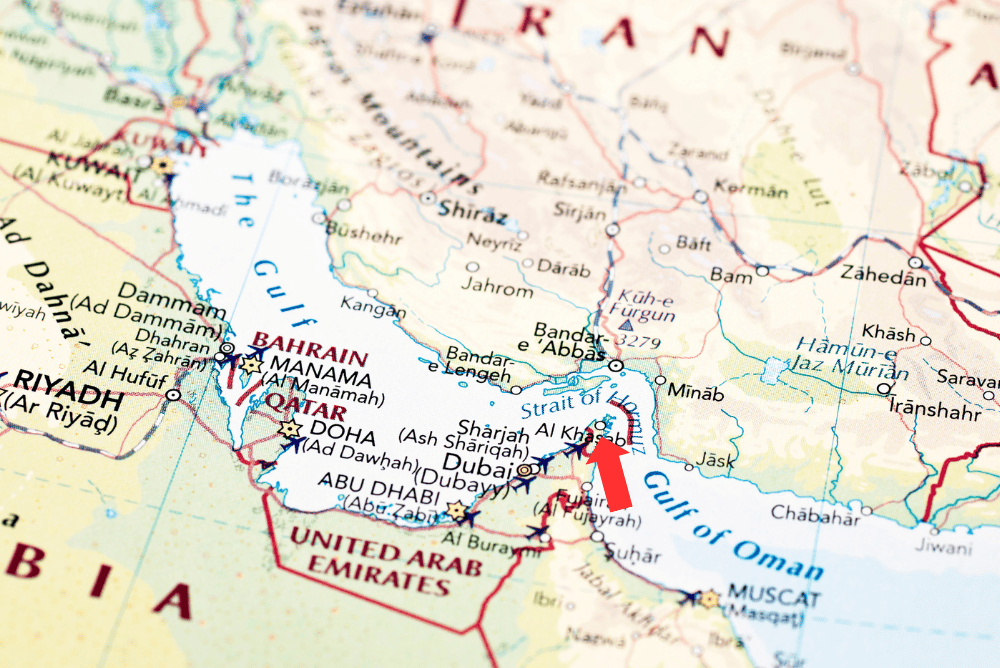
A 52% chance
Goldman highlighted that prediction markets, despite limited liquidity, now reflect a 52% probability of Iran closing the Strait of Hormuz in 2025, citing data from Polymarket.
Additionally, it noted that a drop in Iranian supply by 1.75 million barrels per day could push Brent to a peak of around $90 per barrel.
In one scenario, the bank said a 1.75 million barrels per day (bpd) drop in Iranian oil supply for six months, followed by gradual recovery, could push Brent crude to peak at $90 per barrel before falling to the $60s by 2026.
In the second sub-scenario, where Iranian production remains persistently lower, Brent could still peak at $90 but stabilize between $70-80 in 2026 due to reduced inventories and global spare capacity, Goldman Sachs said.
“While the events in the Middle East remain fluid, we think that the economic incentives, including for the US and China, to try to prevent a sustained and very large disruption of the Strait of Hormuz would be strong,” Goldman Sachs said.
Iran’s Supreme National Security Council must make the final decision on whether to close the Strait of Hormuz following US bombing raids, Iran’s Press TV said on Sunday, after parliament was reported to have backed the measure.
Goldman Sachs also projected European natural gas markets, including the TTF benchmark, to price in a higher probability of disruption, with TTF potentially rising closer to 74 euros per megawatt-hour ($25/MMBtu).
However, the bank noted that US natural gas prices would face limited impacts due to structural factors such as strong export capacity and minimal domestic LNG import needs.
Closing the Strait would be ‘economic suicide’
On Sunday, US Secretary of State Marco Rubio called on China to encourage Iran to not shut down the Strait of Hormuz after Washington carried out strikes on Iranian nuclear sites.
“I encourage the Chinese government in Beijing to call them about that, because they heavily depend on the Straits of Hormuz for their oil,” said Rubio, who also serves as national security adviser.
“If they do that, it will be another terrible mistake. It’s economic suicide for them if they do it. And we retain options to deal with that, but other countries should be looking at that as well. It would hurt other countries’ economies a lot worse than ours.”
Rubio said a move to close the strait would be a massive escalation that would merit a response from the US and others.
The Chinese embassy in Washington did not immediately provide comment.
US officials said it “obliterated“ Iran’s main nuclear sites using 14 bunker-buster bombs, more than two dozen Tomahawk missiles and over 125 military aircraft. The strikes mark an escalation in the ongoing Middle Eastern conflict.
Tehran has vowed to defend itself. Rubio on Sunday warned against retaliation, saying such an action would be “the worst mistake they’ve ever made.”
But he said the US was prepared to talk with Iran, although Tehran has expressed more interest in talking to Moscow on how to respond.
Analysts at JPMorgan Chase have reportedly described blocking the strait as a “worst-case scenario”, suggesting it could push inflation in the US to 5% and would block not just shipments from Iran, but also Saudi Arabia, Kuwait, Iraq and others.
That would impact its relations with neighbouring states, commentators noted.
Flights to Middle East cancelled, ship seizures possible
But other analysts say Iran is known for seizing commercial vessels in the region in retaliation to US actions.
And it’s not just shipping likely to suffer negative impacts. Many airlines have been forced to suspend flights to Dubai, Riyadh or Doha – Singapore Airlines, plus Air France and British Airways all cancelled flights on Sunday and today, along with US airlines that suspended flights even before the strikes occurred.
Meanwhile, China could face a serious hit if the Strait of Hormuz is close, as it buys more oil from Iran than any other country – its imports from Iran topped 1.8 million barrels a day in May, according to ship tracking firm Vortexa.
But other big economies in Asia – India, Japan and South Korea – also rely heavily on oil that passes through the Strait.
Markets in Asia were mixed on Monday, with the ASX in Sydney down 0.4%, the Nikkei edging lower by 0.13% and the BSE Sensex sliding 0.65%.
However, the Hang Seng in Hong Kong rose by 0.67% and the Shanghai Composite was up by about the same amount (0.65%), although smaller markets in Jakarta (-1.74%), Manila (-1.92%) and Bangkok (0.45%) were all down.
The price of Brent crude was $77.60 – up 0.77% at 11.40am GMT on Monday.
Perhaps the most troubling news in the wake of the US and Israeli attacks is that other nations may be ready to supply Iran with nuclear weapons – a claim made on Sunday by Russia’s former President Dmitry Medvedev, a noted hardliner, according to a report by UPI.
- Reuters with additional input and editing by Jim Pollard
NOTE: A map of the Strait was added to this report, and minor edits done on June 23, 2025.
ALSO SEE:
Houthi Rebels Deny Cutting Three Red Sea Data Cables – AP
Risk of ‘Environmental Catastrophe’ from Ship Sunk in Red Sea
Red Sea Crisis Hurting Indian Exporters As Rivals Nab Business
French Shipping Giant Joins Red Sea, Suez Route Boycott
Red Sea Crisis Likely to Drag on For Some Time: Shipping Chief
As Suez Canal Trade Tanks, China Warns Iran on Red Sea Attacks
US Frustration at Chinese ‘Inaction’ Over Red Sea Attacks
Red Sea Attacks Pose Billions Worth of Risks for China, India
Chinese Exporters Face Shipping Crisis From Red Sea Attacks
Shipping Chaos Set to be ‘New Normal’ Amid War, Climate Change
Shipping Firm to Use Saudi Land Routes to Avoid Red Sea Threat
Red Sea Attacks Spur a Surge in Asia-to-Europe Air Freight




